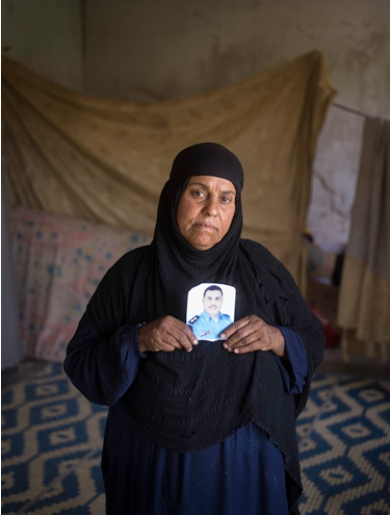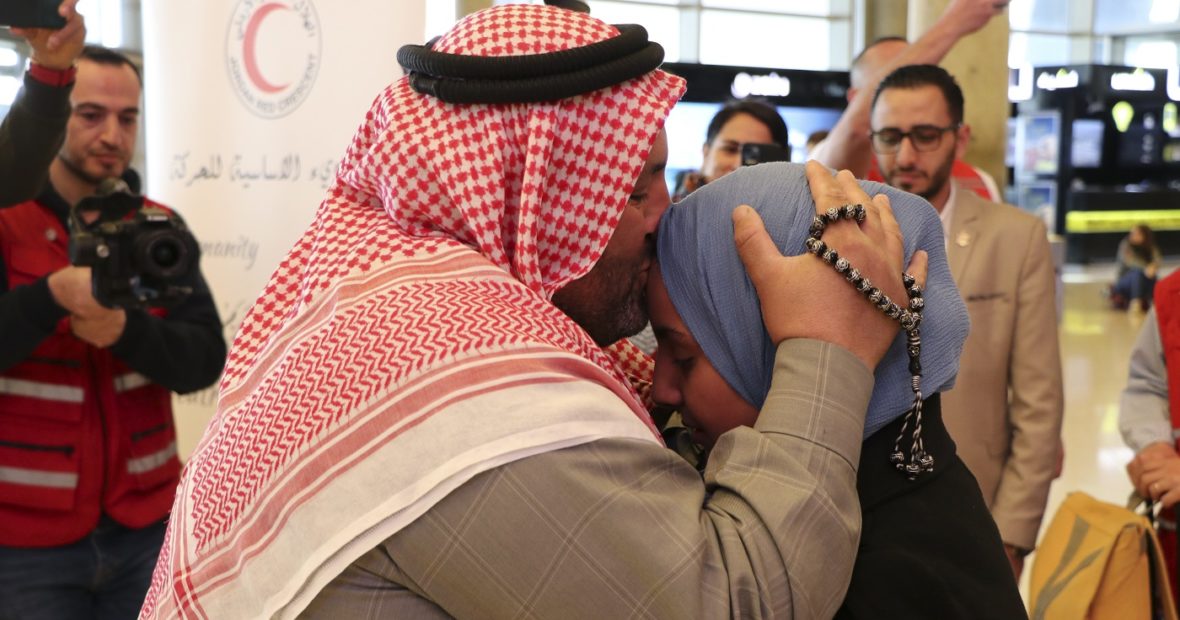For more than150 years, the ICRC’s Central Tracing Agency has been helping people separated from their loved ones, due to armed conflict, migration or national disaster. We are entrusted by the Geneva Conventions as a neutral intermediary to assist parties and remedy family separation and disappearance in armed conflicts.
In times of conflict or crisis, families get separated and people die or go missing, creating suffering and uncertainty for those left behind. The impact of not knowing the fate or whereabouts of your loved one is devastating, deep and enduring, sometimes lasting for decades.
In addition to helping people separated from their loved ones in times of conflict, the Central Tracing Agency (CTA) coordinates global efforts by the International Red Cross and Red Crescent Movement to protect and restore family links, search for, and identify missing people, protect the dignity of the dead, and address the needs of families of missing people.

The number of people who go missing or whose bodies are unidentified continues to grow alarmingly around the world. By the end of 2022, more than 195’000 missing persons were registered with the ICRC’s Central Tracing Agency and its Family Links Network around the world.
This is due to increasingly complex protracted conflicts and situations of violence, the movement of vast numbers of people along migration routes spanning multiple borders and regions, and the effects of devastating disasters.
Today more than 550 ICRC experts – case managers, data analysts, forensic specialists, psychologists and lawyers – work with the CTA around the world. They cooperate closely with the 192 National Red Cross and Red Crescent Societies that form the Restoring Family Links network. Together, we search for missing people and reconnect separated families across borders and frontlines from Colombia and Iraq to Georgia and the Philippines.

As part of the missing program, ICRC in Iran facilitated the hand-over of Human Remain ceremonies through which 44 body remains were repatriated
To keep pace with people’s needs – and ever-evolving technological advances – the agency is undergoing a five-year transformation (2020-2025) to strengthen its foundations and adapt to growing challenges. Innovation has been at the heart of the CTA throughout its history.
By adopting and adapting new digital techniques and improved data management and analysis, we aim to trace more people more quickly – and help more families stay connected.
For example, the CTA is increasing its capacity to collect and analyse large amounts of data from multiple and dispersed sources to provide answers to families searching for their missing relatives.

Alanbar, Iraq. This 59-year-old woman lost her son while fleeing the battlefield. In this photo, the mother is holding a photo of her missing son.
Other developments include expanding ways for families to digitally access and use family links services, such as Trace the Face. The CTA is also looking to automate aspects of tracing, such as name-matching and the analysis of complex, transregional migration patterns.

In 2022:
- More than 55,000 people were registered as missing by their families with the Family Links Network, bringing the current number of registered missing people to more than 195,000
- We located nearly 13,000 people and reunited nearly 5,000 people with their families (cases were resolved by the ICRC, National Societies and in some cases families themselves.)
- We delivered nearly 170,000 Red Cross Messages and facilitated nearly5 million telephone calls
More than 150 years of tracing people

World War I. Prisoners of war camp in Heuberg. Control of the parcels. ICRC archives (ARR)
The ICRC set up its first tracing agency in 1870, during the Franco-Prussian war. Called the Basel Agency, it served as an information and relief bureau for prisoners of war.
During WWI, the International Prisoners of War Agency employed thousands of people – including, for the first time, women – to process millions of requests from families. After 1918, tracing became a permanent service, and the agency gained legal recognition in 1929.
By WWII, and now known as the Central Prisoners of War Agency, it was able to process 37 million index cards, using computers, radio and other technologies. Outlined in the Geneva Conventions of 1949, the agency continued to work on cases relating to the world wars. It also conducted research and set up delegations to respond to new crises in the latter half of the 20th century.
In 1960 it was renamed the Central Tracing Agency. Since then, the CTA has formed the backbone of the RC/RC Movement’s global efforts to protect family links, maintain contact between separated family members, search for and identify missing people, protect the dignity of the dead, and ensure their families’ needs are met.



Comments